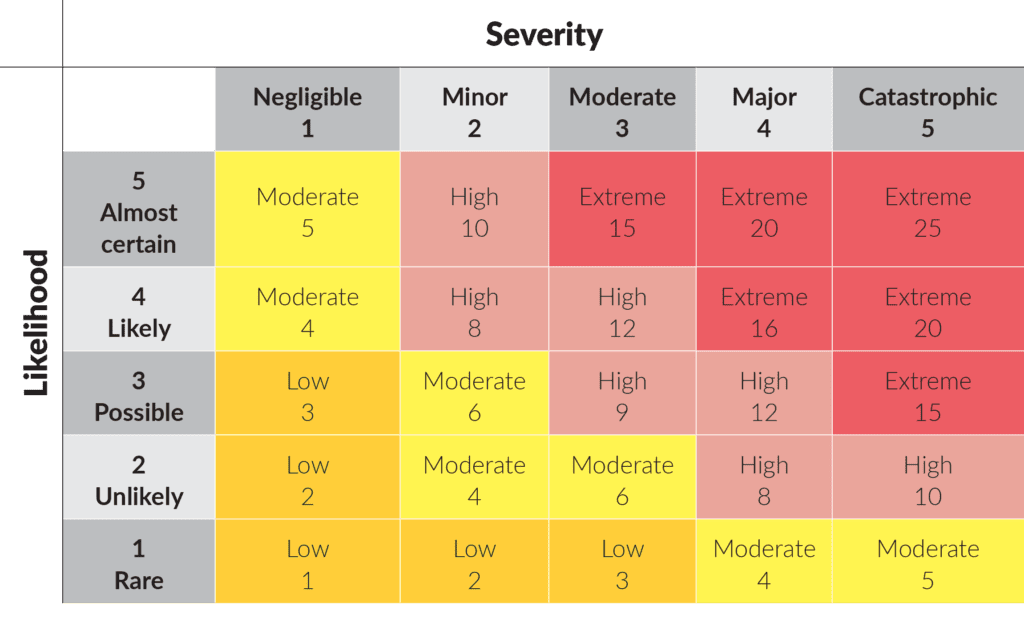Key Findings Patent Risk Survey

Death, taxes and patent risk
Benjamin Franklin declared death and taxes as the only things certain in life. As we enter the fourth industrial revolution, patent risk can be added to the list. At a time where it is intangible assets that make up the bulk of enterprise value, it should be a boardroom priority to understand new sources of risks facing the organisation and to ensure that appropriate resources are deployed to manage and mitigate that risk.
So what is patent risk and how best should it be communicated to the board?
What is patent risk?
Patent risk can be defined as the assessment and quantification of the uncertainty and undesirable outcomes associated with the ownership of patents and use of patented technology.
It can be broken down into a number of distinct categories:
- Intrinsic risk – the reality that not every granted patent is valid and enforceable. It is hugely important to remember that this risk applies equally to your patents and those owned by others.
- Environmental risk – the additional uncertainty caused by the constant change of patent laws around the world.
- Innovation risk – the inherent uncertainty of bringing any new product or service to market. Also referred to as infringement risk, it is now virtually impossible to know whether your latest products infringe patents owned by others.
- NPE risk – non-practicing entities (NPEs) have been around for over 20 years, and while the legal environment has curtailed the worst excesses of this risk, it remains a permanent feature of the patent risk landscape. Immune from counter-assertion, NPEs merit their own category.
- Assertion risk – reflecting the shift towards portfolio licensing, and away from disputes over individual patents. This used to be captured within Innovation risk, it now dictates a different approach and is therefore given a class of its own.
This classification is derived from categories of patent risk identified in Edison in the Boardroom (Suzanne Harrison and Patrick Sullivan). While not intended to be prescriptive, classification of risk sits at the heart of consistent assessment and better communication.
The consequences of patent risk can be catastrophic. Patent disputes are expensive right from the start, not only in terms of legal bills but also the time of key personnel such as the CTO and CFO. Litigation risk also creates uncertainty with customers and investors.
Quantification
A common way business risks are assessed is to identify all events that could impact that risk area and then score each event by combining both likelihood of occurrence and impact of the consequences. The same approach can be applied to patent risk.
Risk = Likelihood x Impact
By scoring each independently on a scale of 1-5, risk can be represented in a risk matrix, illustrated below:
The scores are Likelihood x Severity (25 being a risk which is both certain and catastrophic). The approach enables each of the patent risks to be ranked in a way that can readily be communicated. For example, for a hypothetical high tech company:
Intrinsic Risk might score 6, being the result of a Possible risk (the validity of patents are frequently challenged) with a Minor impact (reflecting that owners often have many patents relating to a single technology)
Assertion Risk might score 15. Most high tech companies end up with a suite of licenses and cross- licenses (5 for Almost Certain) and the Severity can be moderate to major depending on prevailing royalty rates and the steps that the company has taken to mitigate this risk.
The same approach can be taken for more granular assessment. For example, while many companies will have many competitors on their “threat list”, the increased availability of strategic patent intelligence makes it possible to quantify the relative threat from each (refer to Beyond Portfolio Optimisation, IAM 2020).
Risk Mitigation
Patent risk creates significant potential liabilities and it is the responsibility of the CEO and the board to ensure that the risk is managed and mitigated in-line with the organisation’s overall strategy and appetite for risk. It is the role of the legal and patent team to communicate and validate the mitigation strategies in each area.
Referring back to the risk categories, these are some of the available mitigation strategies:
Patent risk sits at the heart of IP strategy
It would be tempting to read the news of $1B+ patent awards against Cisco and Apple and believe that patent risk only hits large companies. This is not true. The hallmarks of a company with high risk are growing revenues and a small patent portfolio. It is this set of companies who are typically the disruptors and in the public eye. This puts a target on their back.
While it’s great to see the rise of IP strategy, there are still too many companies who fail to prioritise the risks patents pose. What’s missing is a better understanding in the boardroom of the magnitude of the risk and the proven strategies for mitigating that risk. There are still too many companies where patents are seen as a cost, without full appreciation of the value they deliver. In this context, value is not a hypothetical. It can be calculated and communicated using strategic patent intelligence. Companies who adopt this approach typically prioritise investment in patent portfolios, favouring this approach to dealing with patent litigation at an inconvenient time. Which is always.
As part of our research into quantifying and mitigating patent risk, we conducted a global survey and the Key Findings are available to download here.



